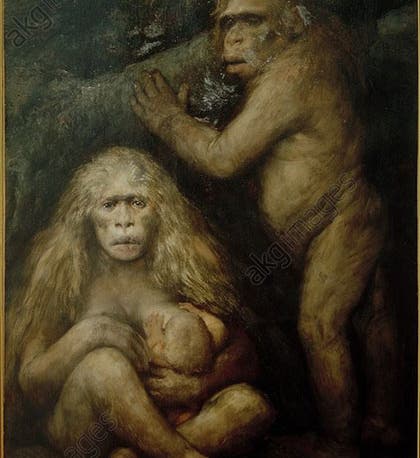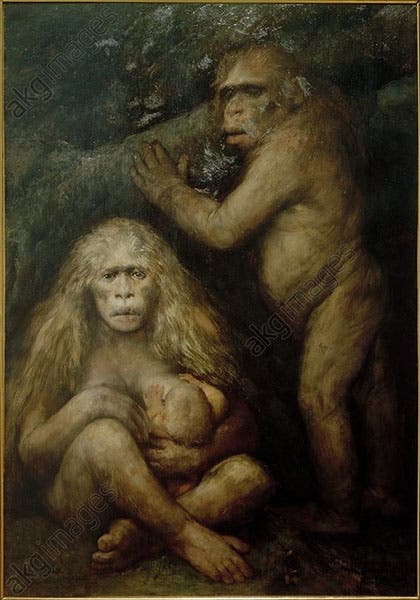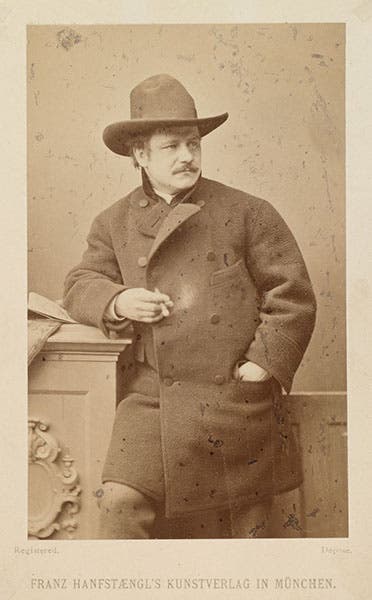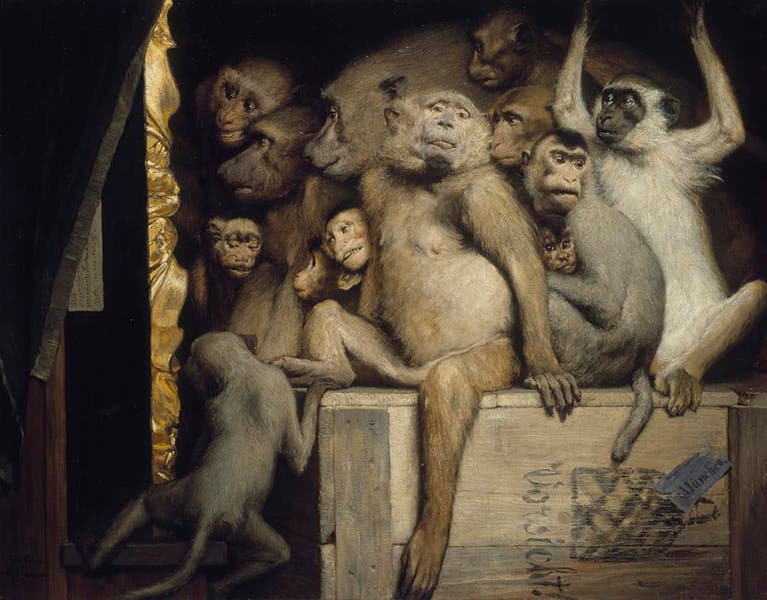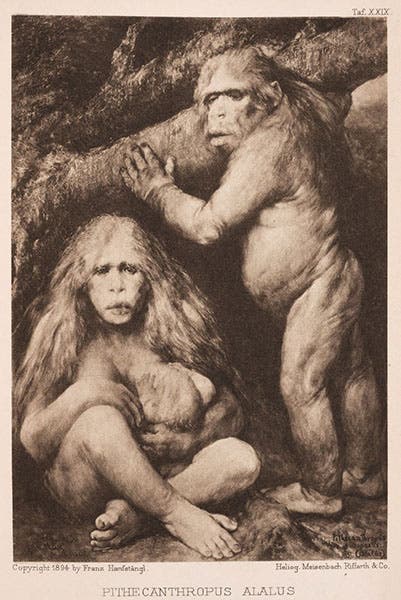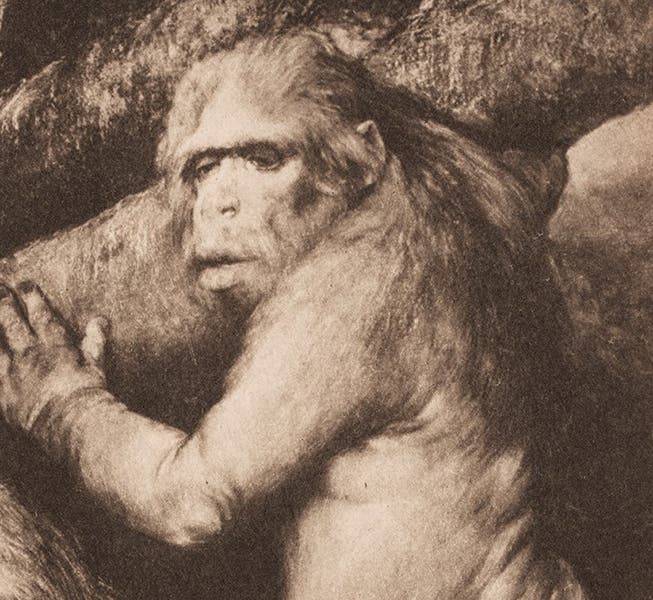Scientist of the Day - Gabriel von Max
Gabriel von Max, an Austrian artist, was born Aug. 23, 1840. in Prague. He trained at the art academies of Prague, Vienna, and Munich, finally settling down in Munich, where for some years he was professor of history painting at the Royal Academy. In art historical circles, he is considered an important member of the German symbolist movement, which we will not discuss further here, as it is outside my expertise, and we are going to pursue instead his connections with the great German anatomist, Ernst Haeckel.
Our story begins in the 1870s, when for a few years, Max kept a small collection of living African and South American monkeys in his villa and studio in Munich. He would draw them regularly, and although the monkeys did not thrive in Munich, his collection of drawings grew, and in the 1880s, he began to create monkey-themed paintings, usually putting his monkeys in human situations, as a kind of satire on human vanities and pretensions. Perhaps his best known painting is Monkeys as Judges of Art (third image) which is now in the Neue Pinakothek in Munich, and which has to bring a smile to your face, unless you are a professional art critic.
Another popular painting is The Botanists, which is in the Frye Museum in Seattle (fourth image). I especially like The Scholars, which was sold at auction in 2015 (for nearly 150,000 euro!) and is now in a private collection somewhere (fifth image). It appeals to me, I suppose, because I am a scholar, and because it drives home the point that if you put two scholars together, they inevitably begin to lecture each other.
Max's practiced skill in drawing primates would soon come in handy. Max apparently knew Ernst Haeckel, professor at Jena – well enough to give him birthday presents. Haeckel in the 1890s was at the peak of his fame as the foremost proponent of Darwinian evolution in Germany, and as a principal advocate for extending evolution to the subject of human origins. Haeckel had published a famous evolutionary tree diagram in 1874, in which he showed the four living great apes plus humans as having evolved from a primitive common ancestor, which he called Pithecanthropus – “ape-man" (you can see several versions of the tree at our first post on Haeckel). Then, in 1891, the Dutch physician Eugène Dubois found, in Java, a primitive skull, femur, and tooth, which he assigned to a human ancestor that he named, after Haeckel, Pithecanthropus erectus. You can see the “Java man” fossils at our post on Dubois, and in our online exhibition, Blade and Bone: The Discovery of Humany Antiquity.
Max seems to have realized that he was just the man to attempt to bring Pithecanthropus to life. So he painted in oil a wonderful scene in which Pithecanthropus père stands (with difficulty) next to his mate, who suckles a young child (first image). This was a rare attempt to depict prehistoric humans with sympathy and dignity. He presented it to Haeckel on Haeckel’s 60th birthday, Feb. 16, 1894. Haeckel was not sure whether the painting was intended to be realistic, symbolic, or satirical. But he liked it, and either Haeckel or Max arranged for a photographic reproduction in heliogravure, so that Haeckel could include it in his next book, a new edition of Natürliche Schopfungsgeschichte (A Natural History of Creation), published in 1898. We have this edition in our collections, and we show here both the entire plate (but cropped to the plate margins; sixth image), and a detail of the male Pithecanthropus (seventh image). Max's original painting is in the Ernst-Haeckel-Haus at the Friedrich Schiller University in Jena.
The finest collection of Gabriel von Max paintings, drawings, and prints in the United States is the Daulton Collection in Los Altos Hills, California. It was while perusing the collection website that I discovered that Mr. Daulton has a 24" x 17" photogravure of Max's Pithecanthropus painting, which is huge for a 19th-century print, not much smaller than the original oil. It will look on your laptop screen or phone about the same as our 3½” x 5” print, but I am sure it looks incredibly impressive in the flesh, so to speak. Mr. Daulton tells me that it will be on display in an exhibition at the Green Library at Stanford University in the spring of 2024, along with all 12 of the Max monkey paintings that he owns. The exhibition is being organized by Jessica Riskin and Caroline Winterer.
My thanks to Mr. Daulton for his help with this post. He nicely sent me a high-resolution image of my favorite photo of Max (our second image), which is in his collection, along with half-a-dozen others. You can see them all (and the 12 monkey paintings) on the Daulton Collection website.
William B. Ashworth, Jr., Consultant for the History of Science, Linda Hall Library and Associate Professor emeritus, Department of History, University of Missouri-Kansas City. Comments or corrections are welcome; please direct to ashworthw@umkc.edu.

